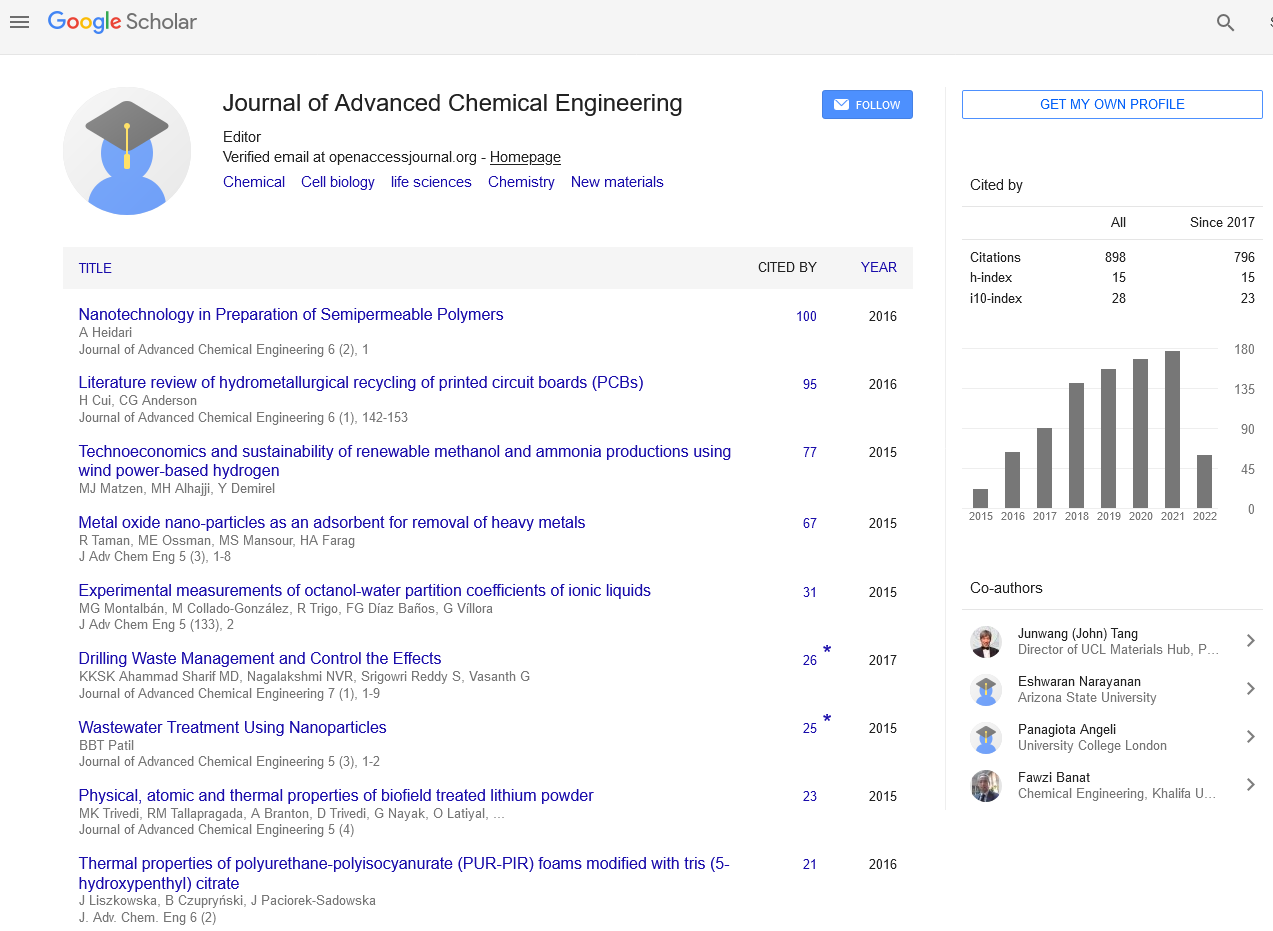Indexed In
- Open J Gate
- Genamics JournalSeek
- Smithers Rapra
- RefSeek
- Directory of Research Journal Indexing (DRJI)
- Hamdard University
- EBSCO A-Z
- OCLC- WorldCat
- Scholarsteer
- Publons
- Geneva Foundation for Medical Education and Research
- Google Scholar
Useful Links
Share This Page
Journal Flyer

Open Access Journals
- Agri and Aquaculture
- Biochemistry
- Bioinformatics & Systems Biology
- Business & Management
- Chemistry
- Clinical Sciences
- Engineering
- Food & Nutrition
- General Science
- Genetics & Molecular Biology
- Immunology & Microbiology
- Medical Sciences
- Neuroscience & Psychology
- Nursing & Health Care
- Pharmaceutical Sciences
Abstract
SYNTHESIS OF CATIONIC CASSIATORA 1, 5 GALACTOMANNAN FOR INDUSTRIAL APPLICATIONS: A GREEN APPROACH
Deepak Sharma
Polysaccharides being speciality biopolymers are extensively studied for their physicochemical and medicinal properties. Galactomannans from the seeds of leguminous plants are one of the most important industrially used polysaccharides with varied applications in pharmaceutical, health care, petroleum, paper and textile industries. Currently, guar gum and its derivatives are most frequently used industrial galactomannans. Increasing industrial demand resulted in guar gum becoming expensive; which necessitated strong need for economic and equivalent substitute of guar gum. The galactomannans obtained from seeds of Cassia tora Linn. (Wild, annual herbaceous plant profusely found in India and other tropical regions) having galactose to mannose ratio 1:5, may be a good substitute of guar gum. Keeping in view, cationic derivatives of C. tora gum have been prepared. Quaternary ammonium derivatives have varied applications in industries viz. Paper industry as wet-end additive, textiles, shampoos, conditioners, lotions, creams, body washes, shower gels, due to the presence of quaternary moieties. In our laboratory, quaternary ammonium derivatives of Cassia tora gum (CTG) were prepared by using 3-chloro-2-hydroxypropyl trimethyl ammonium chloride (CHPTAC) as cationic reagent in alkaline medium under different reaction conditions using facile approaches. The optimisation of reaction conditions were achieved by varying different parameters such as concentration of NAOH and CHPTAC, solvent ratio, reaction time and temperature. The functionalised products were characterized by estimation of nitrogen content and analysis of Degree of substitution (DS). The maximum DS (0.29) was obtained using gum 0.0123 Mol and 0.0125 Mol of NAOH, 0.00956 Mol of CHPTAC for a reaction time of 4 hrs. at 50??C. Further, characterization of the product was carried out employing spectroscopic techniques and rheological studies. The results reveal that the quaternized products from Cassia tora can be sustainably utilized for industrial applications along with biodiversity conservation.
Published Date: 2020-08-06; Received Date: 2019-09-19


